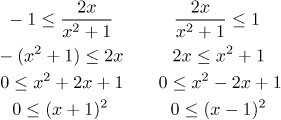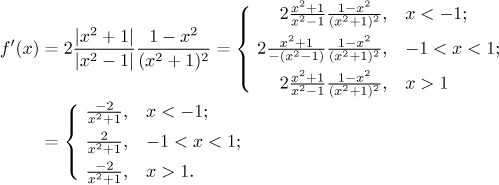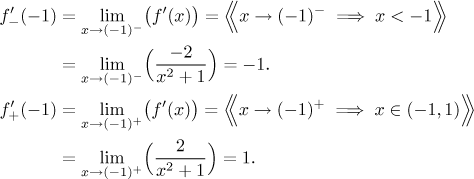Problem: Find the derivative of
![]()
Solution: The function is given by a formula, so we use rules to differentiate. The last operation performed is the arcsine, so we face a composition with arcsine as the outer function that has to be differentiated first (using the chain rule).

Now the last operation is division, so we apply the quotient rule.

Now we use linearity and elementary derivatives to conclude the calculation.

What is the domain of this derivative? We start with the domain of the given
function. Since

We see that both inequalities are true for all real numbers x, so
Is anything different with the derivative? There is a condition in the first
fraction that rules out the case
However, before we start calculating, we will try to simplify the formula we just obtained. We know that the root of something squared is not the something, but absolute value of the something. We use it to rewrite the derivative and then try to get rid of absolute values.

Now we are ready to calculate the one-sided derivatives. We start with

Since the one-sided derivatives do not agree, there is no derivative at

Thus we have an interesting situation: The given function is defined on the whole real line, it is given by a seemingly innocent expression that does not feature absolute values, and yet the derivative has a smaller domain:
Things like this occasionally happen.